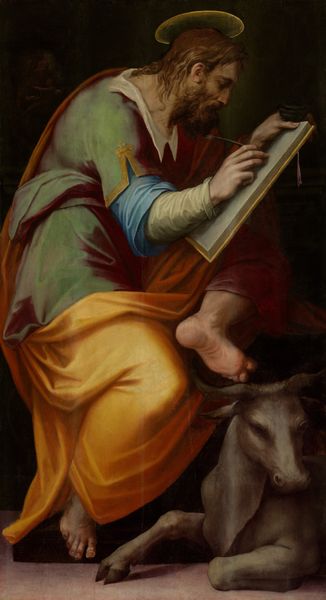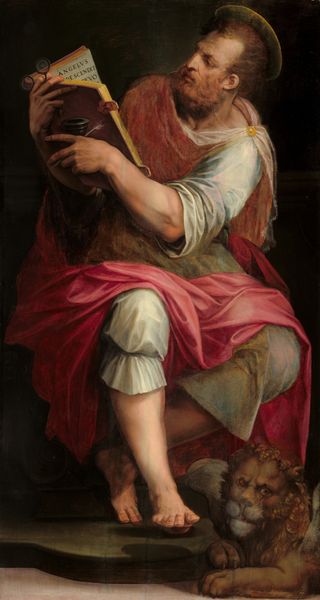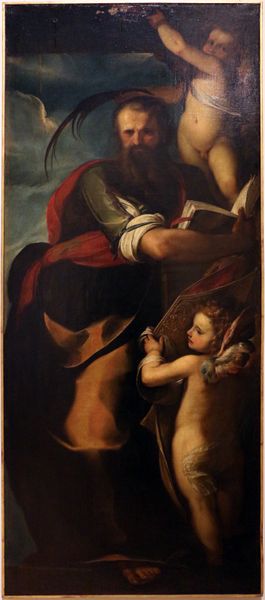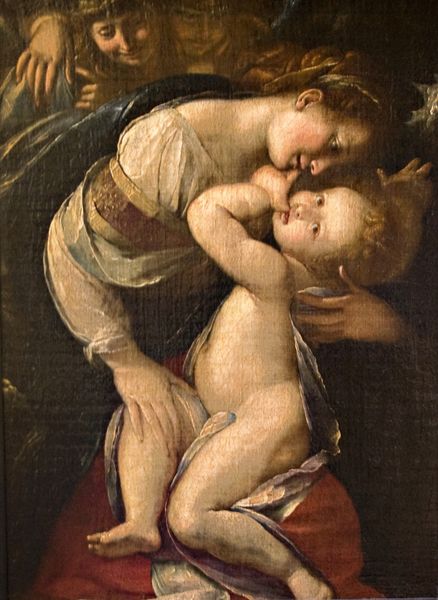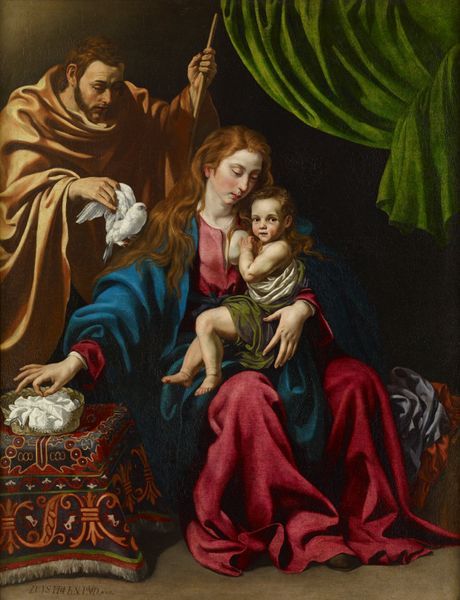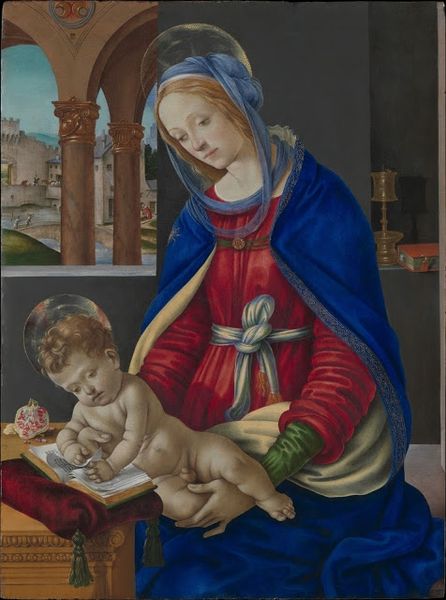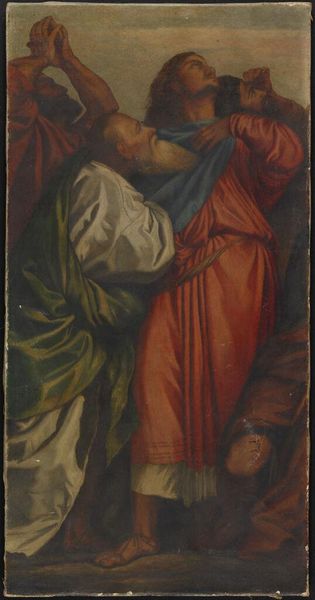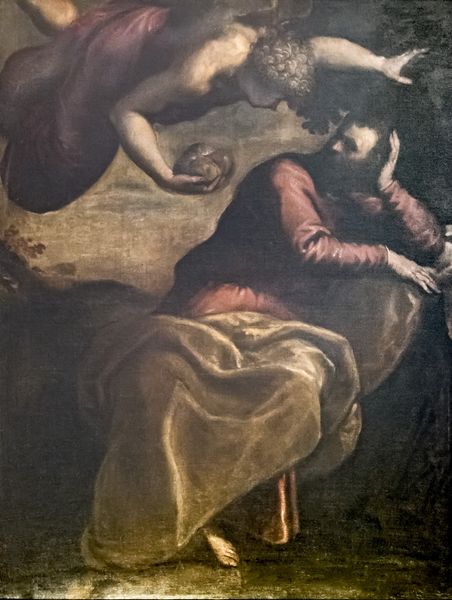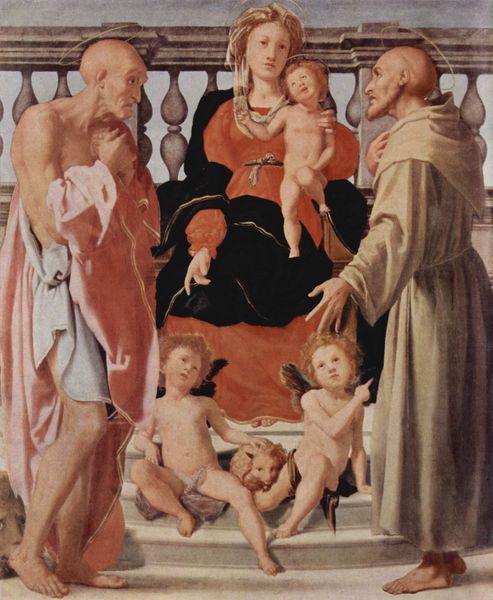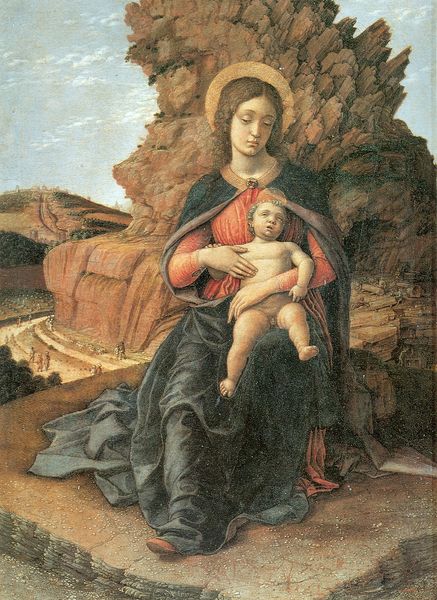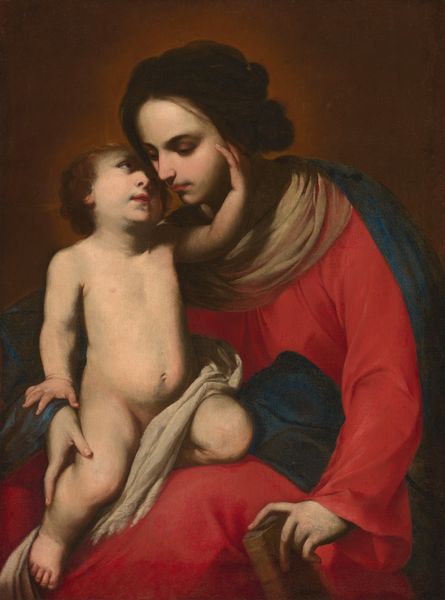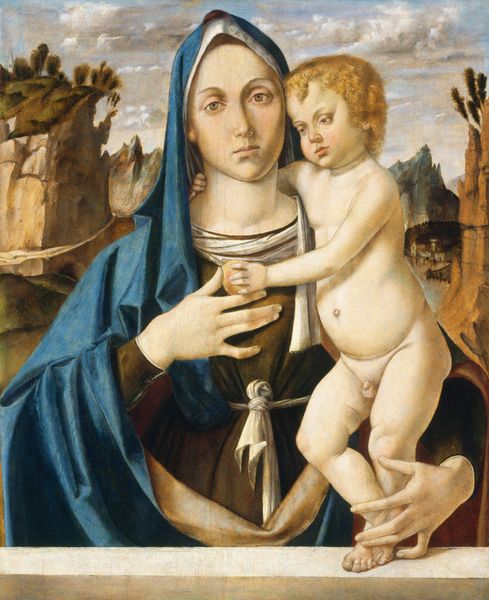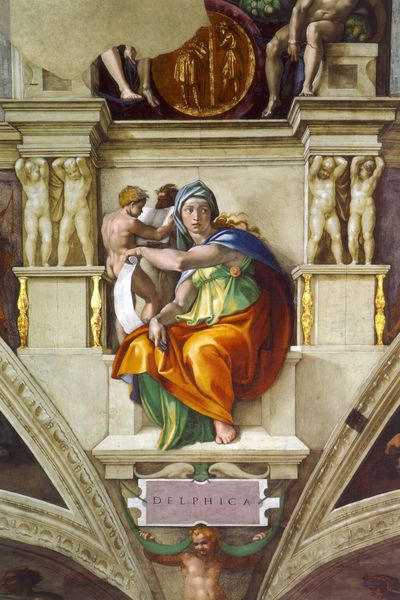
painting, oil-paint
#
portrait
#
high-renaissance
#
painting
#
oil-paint
#
figuration
#
history-painting
#
italian-renaissance
#
italy
Dimensions: 86.9 × 44.7 cm (34 1/4 × 17 5/8 in.)
Copyright: Public Domain
Editor: So here we have Girolamo da Santacroce's "Virgin and Child Enthroned" from 1516, oil on panel. It’s really striking how weighty everything feels, especially the fabrics. What catches your eye in this piece? Curator: I'm immediately drawn to the materials themselves. Oil paint, at this time, allows for the exquisite rendering of texture; that weightiness you observed isn’t just representational, but deeply embedded in the materiality of the artwork itself. Think of the pigments used, likely derived from specific geographical locations, mined and processed by laborers to create the very colours before us. And consider the wood panel, the support, felled and prepared through various processes. What narratives of labour are invisibly woven into this painting? Editor: That's a perspective I hadn't considered. It really shifts the focus from the religious iconography to the sheer effort involved in creating it. But what about the composition itself? How does that fit into a materialist view? Curator: The composition serves the market! The pyramidal structure, inherited from earlier Renaissance masters, facilitates devotional engagement for a largely literate and wealthy clientele. It's a calculated design intended to render both figures as valuable commodities within the economy of faith. Look at the dove, for instance, placed to signal divine inspiration and promote investment into the portrayed ideals of motherhood and piety. We need to consider whose purposes it serves in terms of patronage and consumption. Editor: So, not just a pretty picture, but a complex intersection of materials, labor, and economics? Curator: Precisely. By examining the production process and its context, we move beyond mere aesthetic appreciation and toward a deeper understanding of its place in society and history. This piece, in its materiality, represents the synthesis of faith and capitalism of Renaissance Italy. Editor: I see what you mean! It changes the whole meaning for me. Thank you. Curator: My pleasure. Approaching art from a materialist perspective truly opens it up.
Comments
No comments
Be the first to comment and join the conversation on the ultimate creative platform.
